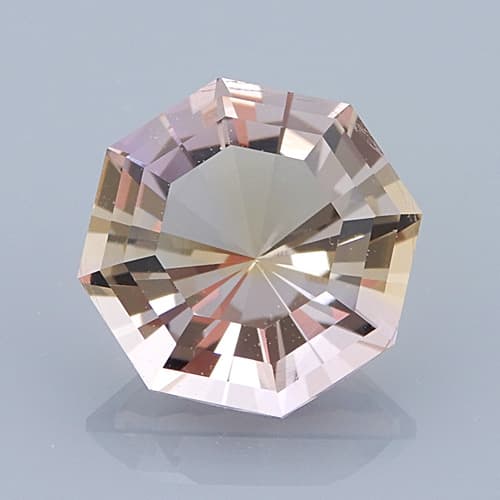Diamond Specialist Certification Course
Understanding Gemstone Facets
Purchase Diamond Specialist Certification Course
Learn the fundamentals of diamonds — from optical and physical properties to grading and ethical and legal issues. Learn to distinguish natural diamonds from synthetics and diamond simulants. Keep the kit, which includes one natural, jewelry-grade diamond. If you successfully pass the quiz and gem identification test, then you will be an IGS-certified Diamond Specialist.If you're new to the art of gem cutting, you'll become quite familiar with these terms as you learn to facet gems. However, all gem enthusiasts, especially gem buyers, can benefit from learning about the types and functions of different gemstone facets.
The Three Principal Areas of a Faceted Gem
Girdle
The widest part of the gem, the girdle defines its outline. When viewed from the side, however, the girdle is usually fairly thin. Faceters cut girdles to help set the stone in jewelry.
Crown
For both cabochons and faceted gems, the top is called the crown. For faceted gems, this means the area above the girdle. Usually, you'll see this area when viewing the "face" of a gem set in jewelry.
Pavilion
The bottom of a faceted gem, the area below the girdle, is called the pavilion.
Types of Gemstone Facets
Mains
The largest facets are called mains. (Some gems have larger table facets). There are both pavilion mains and crown mains.
Table Facet
The large, horizontal facet on the top, the table facet acts as a window into the interior of the gem.
Break Facets
Adjoining the girdle, the break facets scatter light, which creates more scintillation or tiny flashes of light. There are both crown and pavilion break facets.
Star Facets
The "top row" of facets, star facets adjoin the table facet. Along with the other crown facets, they serve to control the entry and exit of light from the gem.
Pavilion Facets
The pavilion facets are designed to reflect the light back to the viewer. This enhances both brilliance, the amount of light a gem returns, and dispersion, the colorful "fires" that seem to emanate from within.
Culet
The point at the bottom of the pavilion is called a culet. Some gems have tiny, flat culets instead of points. This helps prevent chipping.
Keel
Some faceted gems have neither a pointed nor flat culet. Some cuts, like ovals and emerald cuts, have a keel at the bottom of the pavilion, an edge like the bottom of some boats.
Photo 1 shows the girdle and culet of a re-cut spinel gemstone. In Photo 2, gem cutter Dan Stair has added pavilion break facets as well as eight little facets around the culet to enhance the gem's scintillation. Photo 3 shows the pavilion facets partly polished. © Dan Stair Custom Gemstones. Used with permission.
Where Gemstone Facets Meet
Meet
The junction of two facets.
Meetpoint
The junction of three or more facets.
Not all Gemstone Facets are Flat
Facets may start out as flat surfaces, but gem cutters can cut them by hand or machine into concave surfaces, too. You can read about curved facets in our article on gem cutting styles.
Donald Clark, CSM IMG
International Gem Society
Never Stop Learning
When you join the IGS community, you get trusted diamond & gemstone information when you need it.
Get Gemology Insights
Get started with the International Gem Society’s free guide to gemstone identification. Join our weekly newsletter & get a free copy of the Gem ID Checklist!
